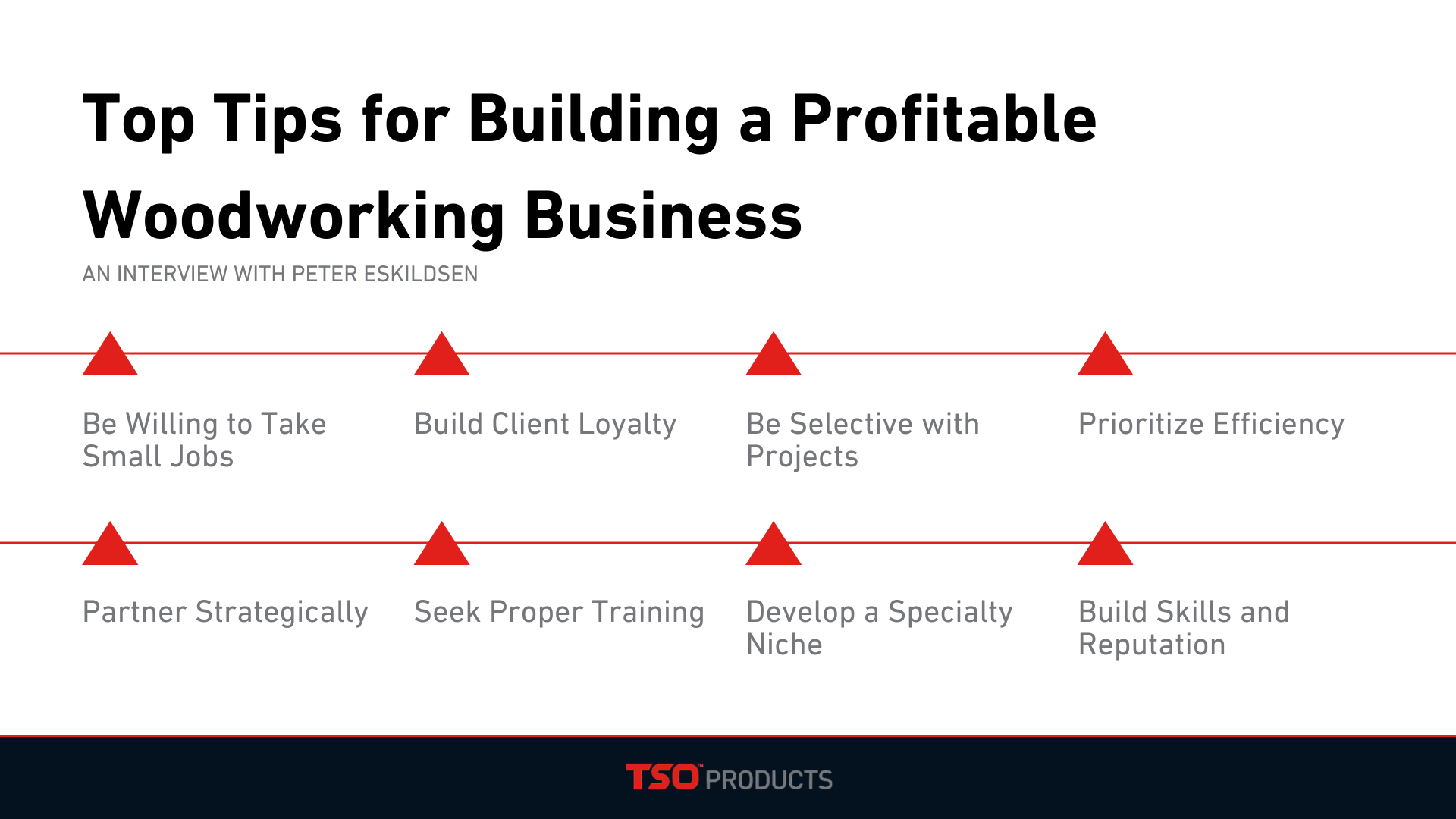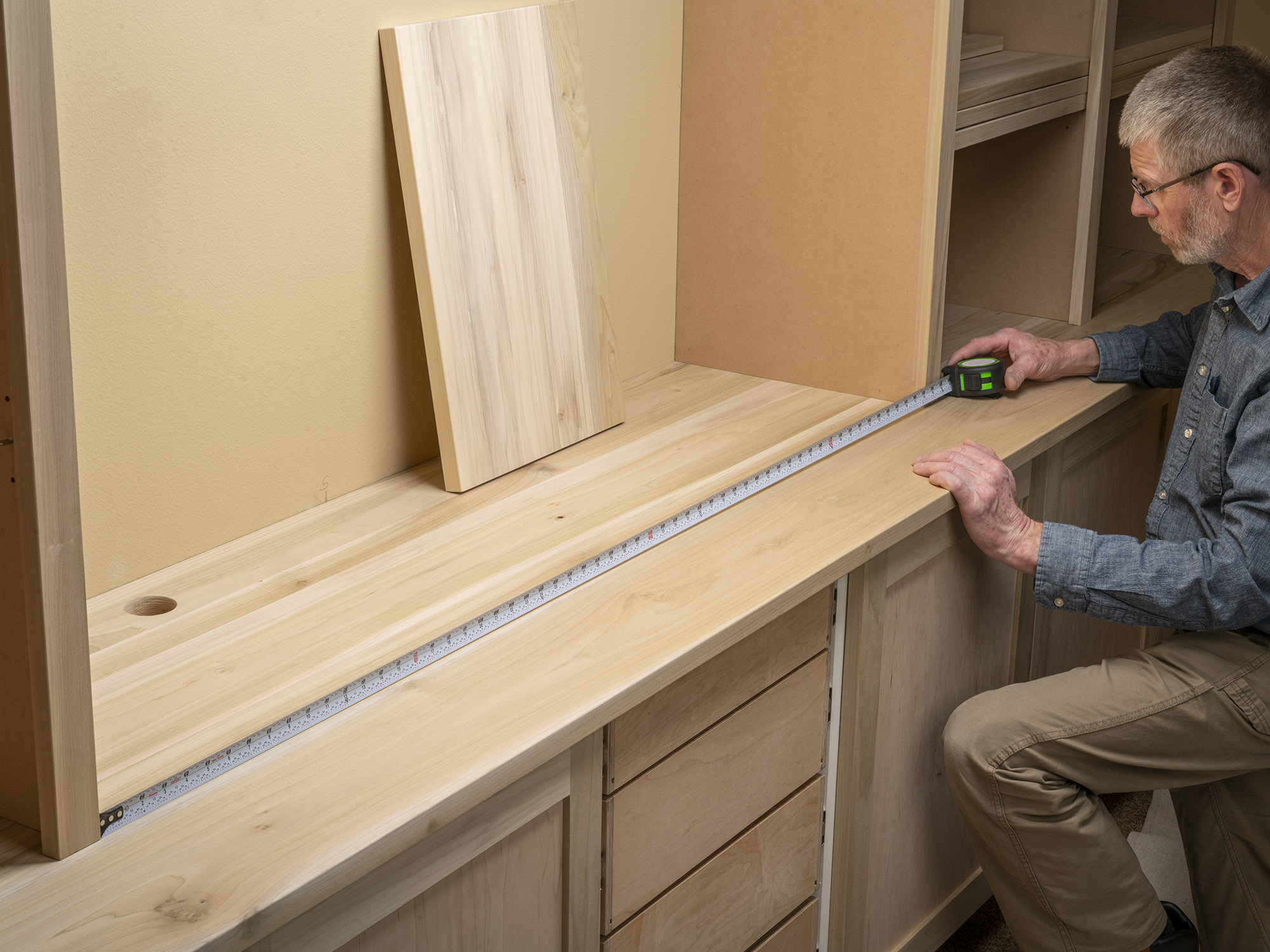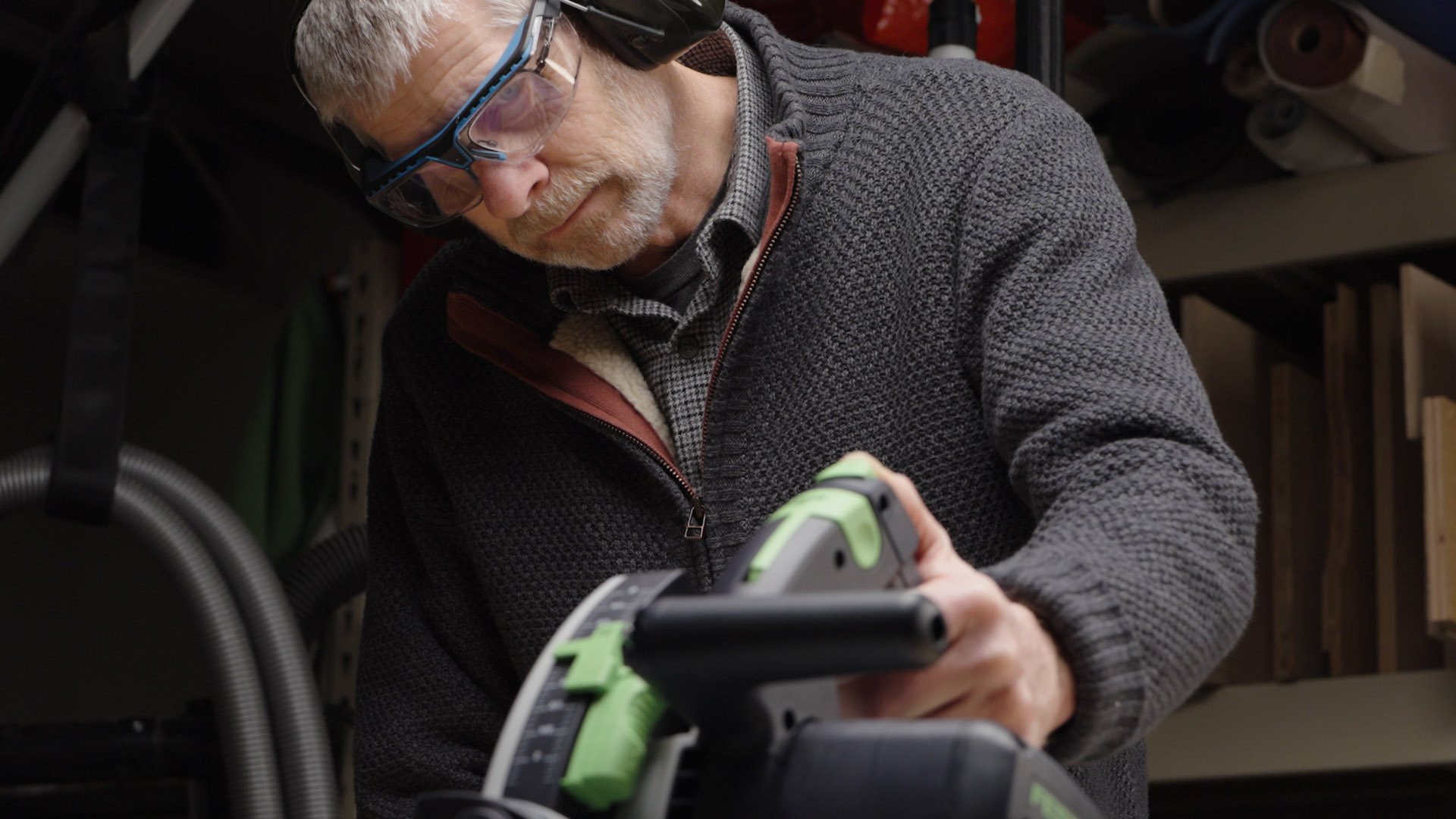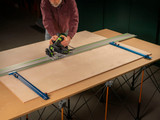Building a Profitable Woodworking Business: Insights from Craftsman Peter Eskildsen
Transitioning from weekend hobbyist to profitable woodworker requires more than just skill at the bench. Peter Eskildsen, owner of Peter's Custom Woodworking since 1993, has built a thriving business by mastering both craft and client relationships.
His top strategies for woodworking profitability include:
- Taking small jobs that often lead to larger opportunities
- Building loyal client relationships for consistent work
- Being selective about which projects to accept
- Working efficiently with the right tools
- Partnering strategically with other woodworkers
- Seeking proper training before launching a business
- Developing a specialty niche if starting part-time
- Building skills and reputation before pursuing growth
This practical approach to business development combines traditional craftsmanship with strategic decision-making. Through years of experience, Eskildsen has refined these principles into a sustainable business model that serves both craftsmen and client. His journey offers valuable insights for anyone looking to transform woodworking skills into a profitable venture.

Peter Eskildsen's Woodworking Journey
Peter’s approach to woodworking was shaped by traditional European training. He completed a comprehensive 3-year, 3-month apprenticeship program in Denmark, dividing his time between hands-on work at a company and formal education in the classroom workshop. "It was the old-fashioned way," Eskildsen reflects, "which really is the best way."
His international experience broadened his woodworking skills further. After working in a Swiss cabinet shop, Eskildsen moved to the United States in 1986, where he spent seven years with a construction company building million-dollar homes before launching his own business in 1993.

Building a Business; One Project at a Time
When Eskildsen established his own shop, he had a significant advantage—his former employer began referring clients who needed small remodels or repairs. "I was very lucky from the beginning," he acknowledges. These initial connections provided a solid foundation that grew through word-of-mouth referrals.
Eskildsen's business philosophy centers on accessibility and relationship-building. "I have often taken on things like window repair. Even if it's not fancy work, it can be very tedious. But if you can repair windows for a client and save them from having to buy ten new windows so that they match, they really appreciate that from you." This approach has consistently led to larger projects and long-term client relationships.
Over time, his work evolved to focus on high-end custom projects. Today, Eskildsen prefers working in his woodworking shop building cabinets, kitchen and bathroom vanities, and custom furniture pieces. This approach minimizes on-site modifications during installation, increasing efficiency and profitability. His versatility is clear in recent projects ranging from custom tables to an elaborate 5' × 6' solid beech enclosure for a small tortoise…a reminder that custom woodworking can fulfill unique client needs across a wide spectrum.
Cultivating Relationships That Last
Eskildsen's early success came almost entirely through word-of-mouth referrals. "I ended up working for several neighbors of a client," he explains. "They'd come in and say, 'Hey, I also have an interest in some work.'" This organic growth allowed him to build a reputation centered on reliability, fair pricing, and exceptional craftsmanship.
Working with affluent clients has taught Eskildsen important lessons about client relationships. "In this area, many people who are wealthy don't ask about costs. But to keep clients like that, you have to be very fair and honest."
The power of these relationships is evident in his client retention. One client from 2008 hired him again in 2023 after moving to a new space.
While referrals dominated his early career, Eskildsen's business has evolved with the times. "These days, a lot of my work comes from people finding my website and giving me a call."

Smart Project Selection Drives Profitability
Eskildsen's approach to profitability is pragmatic. Small repair jobs with quick turnarounds often yield better hourly rates because "people are okay with paying the rate you ask for when it's a small project."
Larger projects can be highly profitable but require careful consideration. "When you come across a bigger project, you have to be very careful. You really have to be confident that you can handle it."
Market awareness also impacts profitability. In Eskildsen's area, old window repair became a reliable niche. "Sometimes it was just one window, other times it turned into a $15,000 project.”
Refining Your Pricing Strategy
Eskildsen's pricing approach evolved with experience. "For the first many years, I was most comfortable just working on an hourly rate," he explains. For large remodels, clients often didn't request quotes—the work simply continued until completion.
As experience grows, many woodworkers transition from hourly to fixed pricing structures. This shift requires developing the ability to accurately estimate project timelines and costs—a skill that comes with practice. Even seasoned professionals sometimes miss the mark, but what matters most is how the relationship is managed when projects run longer than anticipated.
"The goal is always to leave clients satisfied with both the work and the experience," Eskildsen notes. "Preserving goodwill is more valuable than squeezing every possible dollar from a project." This approach builds the trust necessary for long-term business success, even when estimating challenges arise.
Wisdom for Aspiring Professional Woodworkers
For hobbyists looking to transition into professional woodworking, Eskildsen emphasizes proper training and commitment. "You really have to know what you're doing, and training is essential. You really have to get the right training."
He cautions against treating woodworking as a short-term venture. "It's not something you do for just a couple of years. If you want to be successful, you have to do it for a long time. In my case, forever—there's nothing else I'd rather do. That's really how you have the best chance of being successful."

Embracing Efficiency with the Right Tools
For solo woodworkers, discovering new tools and techniques can be challenging. "When you work by yourself," Eskildsen explains, "you don't necessarily get introduced to new ways of doing things. It’s easy to just keep doing it the same way, but you might miss opportunities to work more efficiently by adopting new products."
Eskildsen's introduction to TSO Products came through collaboration. Ryan, TSO’s product photographer, was searching for local woodworkers for an upcoming photoshoot and discovered Peter’s website through a Google search. "I hadn’t heard of TSO Products and had not even considered track saws in my workflow. The first project we did together used a track saw. I always thought, 'Why would I need that? I have a fancy table saw.'" His perspective quickly changed once he had an opportunity to use it. "Now I think, 'Wow, how did I do without it all these years?'"
The track saw proved particularly valuable for on-site work, especially when making scribe cuts on countertops to meet walls that are rarely perfectly square. This adaptability directly translates to increased efficiency and profitability.
Similarly, Eskildsen discovered the value of domino joinery systems. "I've always used just the biscuit joiner. I always thought, 'That's all I need. I don't need that other fancy thing.' But then you have somebody help open your eyes."
In custom woodworking, efficiency without compromising quality is essential. Since custom work is inherently expensive, finding ways to streamline production becomes crucial for maintaining reasonable costs while preserving profit margins. Eskildsen chooses simple, effective joinery methods over more time-consuming decorative options when appropriate, recognizing that practical solutions often better serve both client and craftsman.
Beyond the Workbench: The Complete Professional
Eskildsen emphasizes that professionalism extends well beyond craftsmanship. "Being a professional—well, it's not only your work that has to be professional but also how you talk to clients, how you go about things."
Clear communication is fundamental. "You have to be able to guide people. You have to be willing to talk people down from wild dreams that are so unrealistic that I would get myself in trouble if I just said, 'Sure, let's do that.'" This guidance includes creating clear drawings and being willing to meet clients multiple times if needed to ensure everyone shares the same vision before a single board is milled.

Crafting a Successful Woodworking Business
After four decades as a professional woodworker, Eskildsen's experience reveals that success depends on multiple factors working in harmony. The foundation begins with proper training and skill development, followed by building genuine client relationships based on trust and honesty.
Smart business practices—including strategic pricing, thoughtful tool investments, and collaboration with other professionals—transform skilled woodworking into a sustainable business. As Eskildsen puts it, "You have to have the passion. You have to have the training. And then stick with it."
Perhaps most importantly, successful woodworkers remain adaptable. They embrace new tools that genuinely improve efficiency. They refine techniques based on experience and remain open to evolving client needs and market demands.
For woodworkers looking to build a profitable business, Eskildsen's journey offers a blueprint: start with small projects, deliver exceptional quality, invest in relationships, choose the right tools, and approach each job with both craftsmanship and business sense. In doing so, a woodworking hobby can transform into a rewarding, lifelong profession where, as Eskildsen says, "There's nothing else I'd rather do."
Peter’s Custom Woodworking is based in Woodinville, Washington. Peter is always open to new, creative projects. To get in touch about custom woodworking projects, visit his website at www.petereskildsen.com.
Recent Posts
-
What Size Guide Rail Do I Need? Choosing the Right Length (and When to Use Extensions)
The scenario: you need to make a cut in that full size plywood panel sitting in the corner of your s …6th Nov 2025 -
Best Track Saw Systems: Expert Review & Advice
The track saw market has changed considerably over the past three years. Back then, your options wer …6th Nov 2025 -
Systainer Storage Guide: Organize Your Workshop Tools
Picture this: you're setting up for what should be a straightforward series of cuts, but you can't l …2nd Sep 2025




